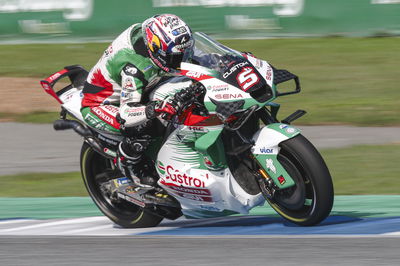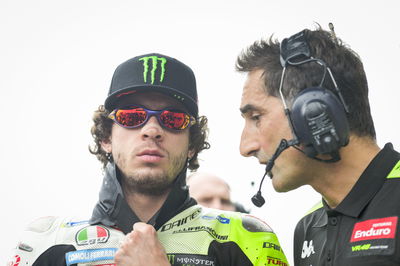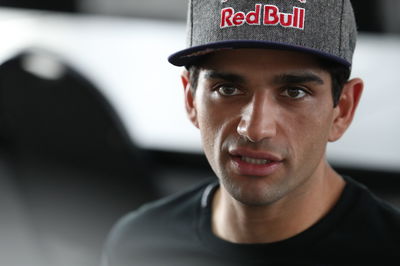Honda MotoGP riders explain “positive thing” in RC213V dry issues being mirrored in the wet
“But [the wet] amplifies the problem, so it’s easier to read the bike and I feel now that we can really focus on one area.”

Honda’s MotoGP riders complained of the same issues in the wet conditions of last weekend’s Thai MotoGP race as they have throughout 2024 in dry races, but for Johann Zarco and Luca Marini this wasn’t necessarily a bad thing.
For Johann Zarco, there was a good feeling to start the race, but after a few laps he dropped back from the riders ahead of him due to a lack of grip.
“I started well, but clearly when the others got some pace, I couldn’t keep the same pace because the bike was sliding too much, I couldn’t feel good on the bike,” Zarco said.
“I tried to do more things, but it pushed me to do mistakes, so I’ve lost positions.
Zarco added that the positives to take were that the wet conditions allowed him to be more certain about the area in which Honda needs to improve.
“The positive thing is it seems on the wet condition, and it’s not the first time I say this comment, we have quite similar problem as in the dry,” he said.
“But [the wet] amplifies the problem, so it’s easier to read the bike and I feel now that we can really focus on one area, compared to the beginning of the year when we had to try everything; now there is one particular area where I would like to do better, and if I unlock this I will do another step.”
The LCR Honda rider continued, saying that the problem was not only rear grip, but rear grip in one specific area.
“It’s too easy to say rear grip, because, yes, rear grip, but where,” Zarco asked — a question he already had the answer to.
“For me, it’s an area in the entry of the corner that we need to get more control of the bike, and once we have this then it will be easier to work on the traction on the exit.”
Repsol Honda’s Luca Marini almost completely echoed Zarco’s thoughts, from that the issues in the dry are the same as in the wet to that the specific issue is corner entry.
“It’s fantastic to feel a situation very familiar,” Marini joked when asked whether the same problems as in the dry are present in the wet.
“We have to improve, we know very well the areas. The problem is that it’s something that is super-difficult to improve — the rear grip. In my opinion, in entry is what is the limit.”
Marini explained that the reason the entry grip is so key is because lack of rear entry grip is delaying the whole process of turning through a corner for the Honda riders.
“If you find that kind of grip in entry, then you are able to make the bike turn [earlier] and then you can pick up more and maybe the traction you will find,” Marini said.
“But, in entry, we have always to wait for the rear because there is always this feeling that the rear is light, with no weight, sliding too much, and we have to wait for the rear to come back in the correct position to lean and make the bike turn.
“So, for example, turn four we are very slow compared, for example, to Yamaha — that still has a problem of traction but when they need to enter fast like this they can trust the rear.
“For us, this [rear confidence on entry] is always a problem, and in wet and dry it’s the same.
“Then, in my opinion, when we pick up the bike ‘full straight’, it’s okay, but the moment before we make too much slide, but this we know.
“If we are able to fix the entry, then this part will be quicker and we can pass through this part quicker and be more directly on a ‘full straight’ bike, [where Honda is] not so bad, I would say, for me better than Yamaha in this case.
“But the problem is that we are always waiting for the rear so we are not able to make the bike turn enough."












